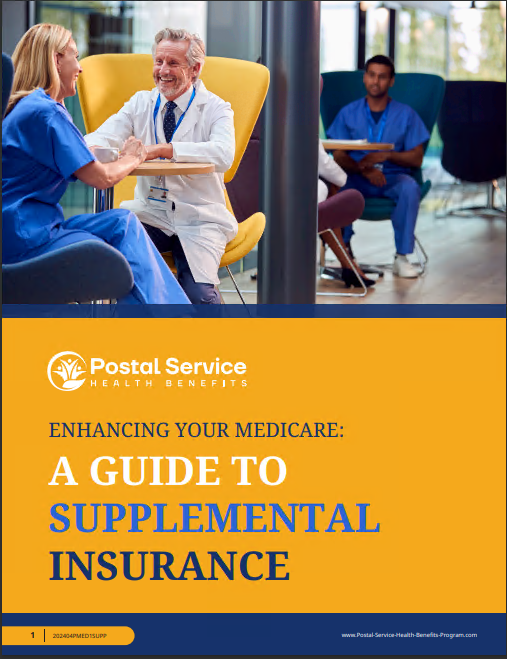Key Takeaways
-
The PSHB program replaces FEHB for Postal Service employees and annuitants in 2025, introducing some significant changes in eligibility, plan structure, and Medicare integration.
-
While many elements remain similar to FEHB, cost-sharing, coordination with Medicare Part B, and mandatory participation rules now apply uniquely to the PSHB system.
What the PSHB Program Is and Why It Matters in 2025
As of January 1, 2025, the Postal Service Health Benefits (PSHB) Program officially replaces the Federal Employees Health Benefits (FEHB) Program for all eligible USPS employees, annuitants, and their covered family members. This change stems from the Postal Service Reform Act of 2022, which mandated the creation of a separate health benefits program tailored specifically for the Postal Service workforce.
The PSHB system is administered by the Office of Personnel Management (OPM), just like FEHB, but operates independently. While some plan options may look familiar, the rules around eligibility, cost-sharing, and coordination with Medicare have evolved—and they now affect your wallet, your care access, and your future planning.
Who Stays in FEHB and Who Moves to PSHB
The transition doesn’t apply to everyone. You move to the PSHB program if you meet one of the following conditions:
-
You are a current USPS employee (career or non-career) as of 2025.
-
You are a USPS annuitant (retiree) who retired after January 1, 2025.
-
You are a family member covered under an eligible USPS enrollee.
However, you may remain in FEHB if:
-
You are a USPS annuitant who retired on or before January 1, 2025 and you are not eligible for Medicare Part B.
-
You are a family member covered under a non-USPS federal employee’s FEHB plan.
This distinction is key because it determines not only which program covers you but also your future obligations—especially around Medicare.
Medicare Part B Enrollment Becomes Mandatory for Many
One of the most significant shifts in the PSHB landscape is the requirement to enroll in Medicare Part B once you become eligible, which generally occurs at age 65. Unlike FEHB, where Part B enrollment has always been optional, PSHB introduces mandatory enrollment in Part B to maintain full PSHB coverage.
There are exceptions to this rule:
-
You are exempt if you retired before January 1, 2025, and are not already enrolled in Part B.
-
You are exempt if you turned 64 before January 1, 2025.
-
You may also be exempt if you live overseas or receive coverage from the VA or Indian Health Services.
If you meet the eligibility requirement but fail to enroll in Medicare Part B, you risk losing your PSHB coverage entirely. This alone makes understanding your Medicare status and timelines absolutely essential.
How Prescription Drug Coverage Is Now Integrated with Medicare Part D
Starting in 2025, all Medicare-eligible PSHB annuitants and their family members are automatically enrolled in a Medicare Part D prescription drug plan through an Employer Group Waiver Plan (EGWP). This EGWP is built into the PSHB offering and does not require separate enrollment.
The integration offers benefits like:
-
A $2,000 annual cap on out-of-pocket prescription drug expenses.
-
Coverage for a broad national pharmacy network.
-
A $35 monthly cap on insulin products.
However, opting out of this integrated drug coverage can result in loss of drug coverage under your PSHB plan, and re-enrollment options are extremely limited.
Premium Contributions and What You Actually Pay
Although the government continues to cover roughly 70% of total premiums under the PSHB program, your actual contributions may look different depending on your plan tier:
-
Self Only
-
Self Plus One
-
Self and Family
Your biweekly or monthly contribution depends on which tier you choose and which plan you enroll in. While some premiums appear affordable at first glance, higher deductibles, coinsurance, and copayments can add up over the course of the year—especially for plans with lower up-front premiums.
Remember, you’re no longer comparing FEHB to FEHB options. Every USPS participant is choosing from a brand-new pool of PSHB plans.
Deductibles, Coinsurance, and Copayments in 2025
Under the PSHB program, cost-sharing structures vary widely by plan. While some plans offer low deductibles and flat copayments, others use percentage-based coinsurance models.
Typical ranges include:
-
In-network deductibles: $350 to $2,000 depending on the plan type
-
Coinsurance: 10% to 30% in-network; 40% to 50% out-of-network
-
Copayments: $20 to $60 for most primary or specialty visits
-
Emergency room visits: $100 to $150 per visit
You’ll want to factor these into your decision—not just premiums. If you use a lot of medical care, a higher-premium plan might be cheaper overall due to lower cost-sharing.
What Stays the Same: Core Protections and OPM Oversight
Despite all the changes, several familiar protections from FEHB remain intact:
-
Guaranteed coverage without underwriting: You cannot be denied PSHB coverage based on health conditions.
-
No lifetime maximums: There is no cap on how much your plan will pay over your lifetime.
-
Nationwide availability: Many PSHB plans offer national or regional coverage.
-
Portability: Your plan stays with you after retirement.
-
Open Season elections: Just like FEHB, you still have the opportunity every November–December to switch plans.
So, while the architecture has changed, you’re still working within a structure built for federal oversight and long-term coverage stability.
Plan Selection Now Requires More Medicare Awareness
If you’re approaching Medicare eligibility, PSHB plan selection is no longer as simple as picking the lowest-cost option. Instead, you must:
-
Check whether the plan integrates effectively with Medicare Part B.
-
Evaluate how your drug coverage will function through EGWP.
-
Understand whether the plan offers Part B premium reimbursement or reduced deductibles if enrolled in Medicare.
Many PSHB plans offer enhanced benefits for enrollees who maintain Medicare coverage. Skipping Medicare Part B might leave you with higher out-of-pocket costs or gaps in coverage.
Dependents and Survivors: Your Coverage Path May Shift
Under PSHB, family coverage still includes eligible spouses and children, just as it did under FEHB. However, survivor benefits also continue, and proper plan selection matters more than ever.
-
If you are a retiree and elect a survivor annuity, your spouse or dependents can continue PSHB coverage.
-
If you pass away without having elected the survivor benefit, coverage for your dependents will end.
Additionally, dependents transitioning from FEHB to PSHB may need to reconfirm eligibility, especially in blended families or households with shared custody.
When and How to Make Plan Changes
PSHB plan changes are still governed by familiar rules:
-
Open Season: Runs each year from November to December.
-
Qualifying Life Events (QLEs): Events such as marriage, birth, divorce, or a change in Medicare status may allow mid-year plan changes.
Outside of these windows, changes are not permitted unless you meet QLE criteria. This makes the Open Season period more important than ever.
Special Enrollment Period for Medicare Part B
To ease the transition in 2025, a Special Enrollment Period (SEP) was made available in 2024 for eligible PSHB participants who had previously delayed enrolling in Medicare Part B. This SEP ran from April 1 through September 30, 2024.
If you missed this window and are now subject to Part B enrollment, you may face penalties unless you qualify for a future SEP due to loss of other credible coverage.
Plan Portability and Moving States
If you relocate after retirement, your PSHB coverage remains intact. However, not all plans offer full national networks. Some may restrict access or offer only emergency care out of network.
Before moving:
-
Confirm that your plan operates in the state you’re relocating to.
-
Check whether in-network providers are available nearby.
This is particularly important for retirees considering moves to rural areas or out-of-state locations.
What You Can Do Right Now
Even though the major transition occurred at the beginning of 2025, you’re not done planning. Here’s what you should be doing now:
-
Review your PSHB plan documents carefully to understand your current coverage.
-
Check your Medicare Part B enrollment status if you’re age 65 or older.
-
Start planning for the next Open Season in November–December 2025.
-
Speak with a licensed agent listed on this website if you’re unsure how Medicare coordinates with your PSHB plan.
Understanding What Changed Helps You Take Control
Switching from FEHB to PSHB is more than a name change—it’s a shift in how your healthcare works, especially once Medicare becomes part of the equation. Understanding what changed, what remained consistent, and how these impact your total out-of-pocket costs puts you in a better position to make the right decisions.
Whether you’re planning for retirement or already there, don’t assume your old strategy still works. Now is the time to reevaluate your plan and talk with a licensed agent listed on this website to find coverage that matches your health needs and financial goals.





